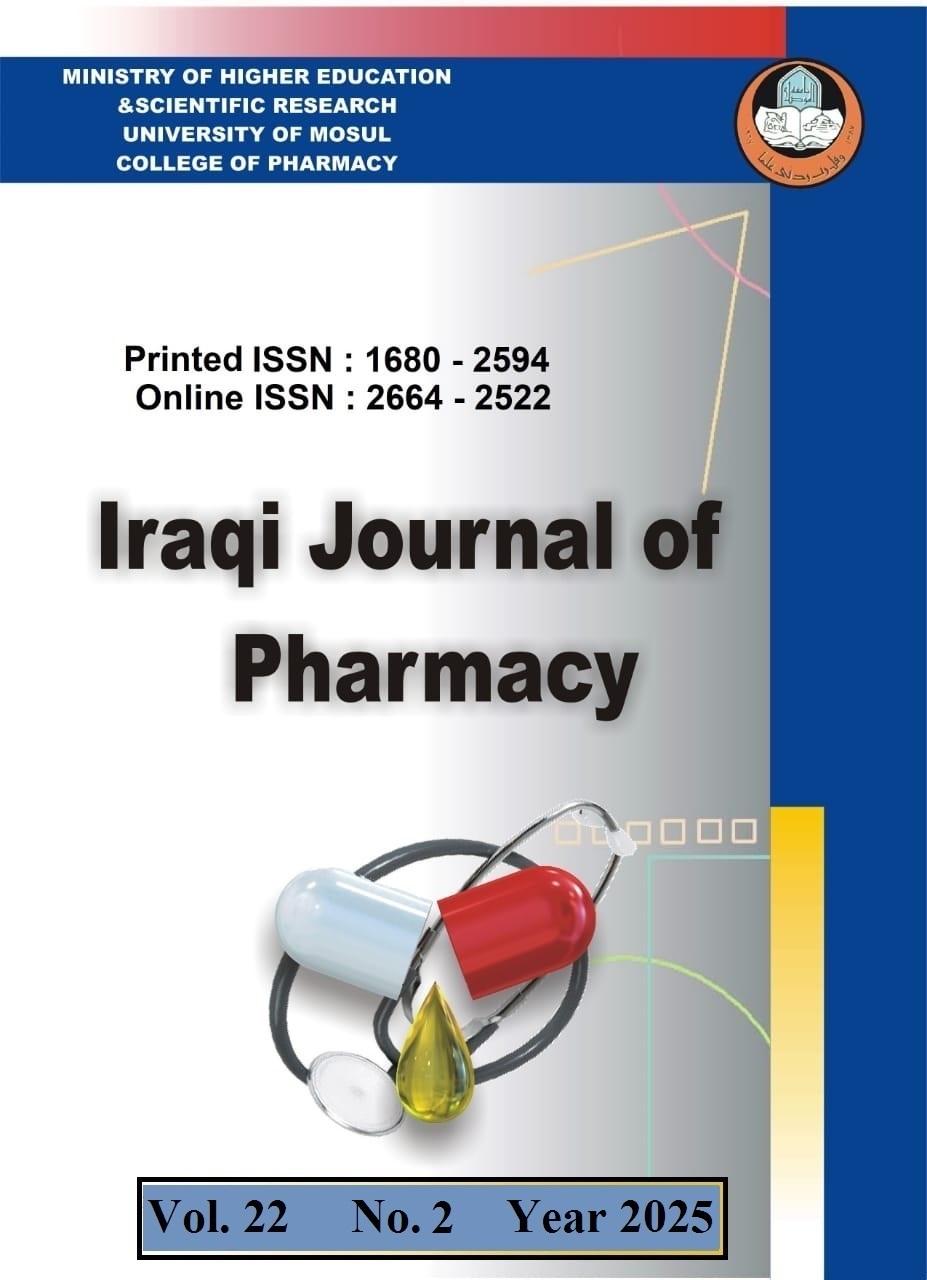Bacterial Profile and Antibiotic Susceptibility Pattern of Uropathogens Causing Urinary Tract Infections in Quetta City, Pakistan
Abstract
Background: Irrational use of antibiotics and antibiotic resistance against uropathogens is a global catastrophe. Consequently, it is necessary to identify the antibiotic susceptibility pattern of uropathogens while managing Urinary Tract Infections (UTIs). Also, recognizing the susceptibility pattern of the uropathogens is essential for empirical antibiotic therapy. The current study aims to establish the bacterial profile and the antibiotic susceptibility pattern isolated from UTI patients in the northern Balochistan part of Pakistan. Methods: The study was carried out between January 2022 and December 2022. Clean catch midstream urine samples were collected. The isolation and antibiotic susceptibility procedures were performed through standard guidelines for microbiological techniques. One thousand forty-eight samples were collected and produced positive bacterial culture. The SPSS v 26 was used for data coding and descriptive statistics were applied accordingly. Results: Four hundred and forty patients (72%) were between 28 -37 years old; males contribute to (61.3%) of all samples. Microbiological cultures were found in 1048 patients with Escherichia coli being the dominant pathogen (1018, 97.1%) followed by Pseudomonas aeruginosa (202, 19.3%). The susceptibility pattern of our study revealed that Cefixime, Norfloxacin, and Nalidixic acid were the antibiotics with the highest resistance rates in bacterial uropathogens, at 100%, 94.0% and 93.7%, respectively. Meropenem, Amikacin, Tazobactam, Fosfomycin and Vancomycin were antibiotics with sensitivity rates exceeding 90%. Conclusion: The bacterial isolates identified in the current study reported high resistance to Cefixime, Norfloxacin and Nalidixic acid (predominantly for Escherichia Coli). This leaves clinicians with very limited options of drugs for the treatment of UTIs. Increased resistance to commonly prescribed antibiotics in UTIs warrants strict surveillance and monitoring of antibiotic use in the community.
References
- Aggarwal N, Lotfollahzadeh S. Recurrent urinary tract infections. StatPearls [Internet]. Treasure Island (FL): StatPearls Publishing; 2023.
- Ahmed SS, Shariq A, Alsalloom AA, Babikir IH, Alhomoud BN. Uropathogens and their antimicrobial resistance patterns: Relationship with urinary tract infections. International Journal of Health Sciences. 2019;13:48-5.
- Al-Huseini LMA, Swadi AA, Swadi SM. Effective cefixime treatment in pregnant women with urinary tract infection. Journal of Chemical and Pharmaceutical Research. 2016;8:73-78.
- Al-Zahrani J, Al Dossari K, Gabr AH, Ahmed A-f, Al Shahrani SA, Al-Ghamdi S. Antimicrobial resistance patterns of Uropathogens isolated from adult women with acute uncomplicated cystitis. BMC Microbiology. 2019;19:237.
- Baldwin CM, Lyseng-Williamson KA, Keam SJ. Meropenem: a review of its use in the treatment of serious bacterial infections. Drugs. 2008;68:803-838.
- Balochistans health sector problems. 2023. https://www.nation.com.pk/06-May-2023/balochistan-s-health-sector-problems.
- Bhargava K, Nath G, Bhargava A, Kumari R, Aseri G, Jain N. Bacterial profile and antibiotic susceptibility pattern of uropathogens causing urinary tract infection in the eastern part of Northern India. Frontiers in Microbiology. 2022:13:965053.
- Bilal H, Khan MN, Rehman T, Hameed MF, Yang X. Antibiotic resistance in Pakistan: a systematic review of past decade. BMC Infectious Diseases. 2021;21:244.
- Bullens M, de Cerqueira Melo A, Raziq S, et al.: Antibiotic resistance in patients with urinary tract infections in Pakistan. Public Health Action. 2022;12:48-52.
- Chaudhary MK, Pandey G, Godar M, Gautam R, Gurung S: Efficacy of cefixime in the treatment of urinary tract infection. World Journal of Pharmaceutical Sciences. 2015;4:987-994.
- Daoud N, Hamdoun M, Hannachi H, Gharsallah C, Mallekh W, Bahri O. Antimicrobial susceptibility patterns of Escherichia coli among Tunisian outpatients with community-acquired urinary tract infection (2012-2018). Current Urology. 2020;14:200-5.
- Dason S, Dason JT, Kapoor A. Guidelines for the diagnosis and management of recurrent urinary tract infection in women. Canadian Urological Association Journal. 2011;5:316-22.
- Din M, Babar KM, Ahmed S, Aleem A, Shah D, Ghilzai D et al. Prevalence of extensive drug resistance in bacterial isolates harboring blaNDM-1 in Quetta Pakistan. Pakistan Journal of Medical Sciences. 2019;35:1155-1160.
- Fanos V, Cataldi L. Cefixime in urinary tract infections with special reference to pediatrics: overview. Journal of Chemotherapy. 2001;13:112-117.
- Flores-Mireles AL, Walker JN, Caparon M, Hultgren SJ. Urinary tract infections: epidemiology, mechanisms of infection and treatment options. Nature Reviews Microbiology. 2015;13:269-84.
- Gohar H. Effectiveness of Fosfomycin against Extended Spectrum Beta-Lactamase Producing Escherichia coli in Urinary Cultures. Pakistan Journal of Medicine and Dentistry. 2021;10:44-50.
- Hassan MM, Malik M, Saleem R, Saleem A, Zohaib K, Malik YA et al.Efficacy of Single Dose of Fosfomycin Versus a Five-Day Course of Ciprofloxacin in Patients With Uncomplicated Urinary Tract Infection. Cureus. 2022;14:e24843.
- Hussain T, Moqadasi M, Malik S, Zahid SA, Nazary K, Khosa MS et al.Uropathogens Antimicrobial Sensitivity and Resistance Pattern From Outpatients in Balochistan, Pakistan. Cureus. 2021;13(8):e17527.
- Iqbal S, Bhatti SM, Amir M, Zaman QU, Raza A. Scenario of Antibiotic Resistance in Pakistan: A Systematic Review. Pakistan Journal of Medical & Health Sciences. 2022;16:643-643.
- Joly-Guillou ML, Kempf M, Cavallo JD, Chomarat M, Dubreuil L, Maugein J et al.Comparative in vitro activity of Meropenem, Imipenem and Piperacillin/tazobactam against 1071 clinical isolates using 2 different methods: a French multicentre study. BMC Infectious Diseases. 2010;10:72.
- Lthje P, Brauner A. Virulence factors of uropathogenic E. coli and their interaction with the host. Advances in Microbial Physiology. 2014;65:337-372.
- Mughal SS, Bakhat S, Noor MQH, Sohail R, Taj Y, Sarwar S et al.Fosfomycin resistance in clinical isolates of Escherichia coli from urinary tract infections in a tertiary care hospital. Pakistan Journal of Medicine and Dentistry. 2023;12:53-57.
- Najar M, Saldanha C, Banday K. Approach to urinary tract infections. Indian Journal of Nephrology. 2009;19:129-139.
- Pakistan antimicrobial resistance surveillance system surveillance report, 2017-2018. 2019.https://www.nih.org.pk/wp-content/uploads/2020/03/Report_2017-2018-NIH-Final.pdf.
- Qamar FN, Yousafzai MT, Khalid M, Kazi M, Lohana H, Karim S et al.Outbreak investigation of ceftriaxone-resistant Salmonella enterica serotype Typhi and its risk factors among the general population in Hyderabad, Pakistan: a matched case-control study. Lancet Infectious Diseases. 2018;18:1368-1376.
- Tandogdu Z, Wagenlehner FM. Global epidemiology of urinary tract infections. Current Opinion in Infectious Diseases. 2016;29:73-79.
- Tenover, FC. Antimicrobial Susceptibility Testing. Encyclopedia of Microbiology (Fourth Edition). 2019;166-175.
- The burden of antimicrobial resistance (AMR) in Pakistan. 2020. https://www.healthdata.org/sites/default/files/files/Projects/GRAM/Pakistan_0.pdf.
- Wu D, Ding Y, Yao K, Gao W, Wang Y. Antimicrobial resistance analysis of clinical Escherichia coli isolates in neonatal ward. Frontiers in Pediatrics. 2021;9:670470.
- Yang X, Chen H, Zheng Y, Qu S, Wang H, Yi F. Disease burden and long-term trends of urinary tract infections: A worldwide report. Frontiers in Public Health. 2022,10:888205.
- Zeng Z, Zhan J, Zhang K, Chen H, Cheng S. Global, regional, and national burden of urinary tract infections from 1990 to 2019: an analysis of the global burden of disease study 2019. World Journal of Urology. 2022;40:755-63.








